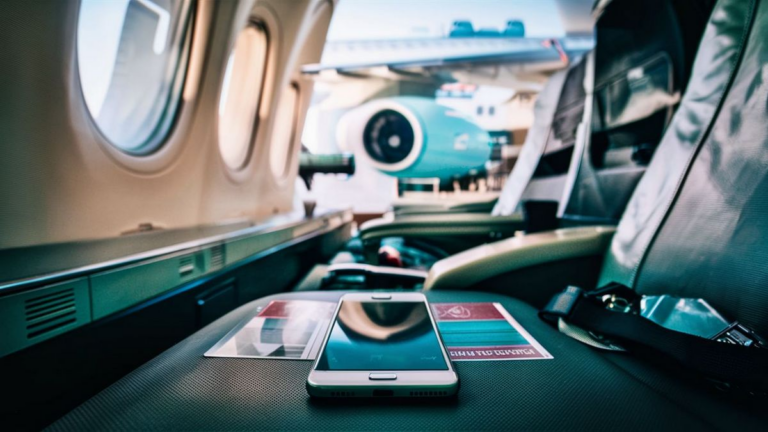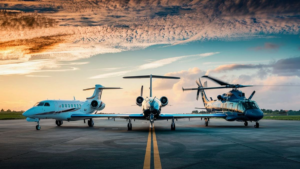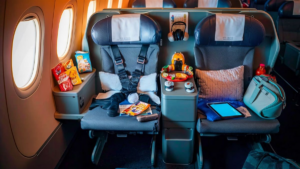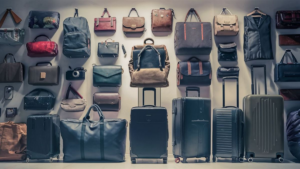When it comes to air travel, there are numerous rules and regulations in place to ensure the safety and security of passengers and crew. One such rule that often sparks curiosity is the restriction on using mobile phones during flights. In this article, we delve into the reasons behind why you can’t use your phone on a plane.
The Interference Factor
One of the primary reasons for prohibiting the use of mobile phones on airplanes is the potential for electromagnetic interference. Aircraft communication and navigation systems operate on specific frequencies, and any external interference, such as that emitted by mobile phones, could disrupt these vital systems.
Aviation Communication Systems
Aviation communication systems, including radar, navigation aids, and air traffic control communications, rely on precise frequencies to function effectively. Even minimal interference from mobile phones could compromise the clarity and reliability of these critical systems, posing a risk to flight safety.
Instrument Landing Systems
Instrument Landing Systems (ILS), which guide aircraft during landings, are particularly susceptible to electromagnetic interference. Any disruption to these systems could hinder the pilot’s ability to navigate safely, especially during adverse weather conditions or low visibility.
Cabin Pressure and Altitude
Another factor to consider is the environment inside an aircraft cabin. As the aircraft ascends to cruising altitude, the air pressure decreases, while the altitude increases. These changes in atmospheric conditions can affect electronic devices, including mobile phones, in unpredictable ways.
Electronic Performance
At higher altitudes, electronic devices may experience fluctuations in performance due to reduced air pressure. This can lead to unintended consequences, such as erratic behavior or malfunctions, which could potentially interfere with aircraft systems.
Radio Transmission
Mobile phones automatically seek signals from nearby cell towers to maintain connectivity. However, at cruising altitudes, the distance between the aircraft and ground-based cell towers increases significantly, making it challenging for mobile phones to establish stable connections. As a result, mobile phones may emit stronger radio signals in an attempt to establish communication, potentially causing interference with onboard systems.
Regulatory Compliance
Additionally, the prohibition on using mobile phones during flights aligns with regulatory guidelines established by aviation authorities worldwide. These regulations are designed to prioritize passenger safety and prevent any potential risks associated with the use of electronic devices onboard aircraft.
Federal Aviation Administration (FAA)
The Federal Aviation Administration (FAA) in the United States, along with other regulatory bodies such as the European Aviation Safety Agency (EASA), strictly regulates the use of electronic devices on aircraft. These regulations aim to mitigate any potential interference that could jeopardize flight operations.
Standard Operating Procedures
Airlines adhere to standard operating procedures that prohibit the use of mobile phones during critical phases of flight, such as takeoff and landing. These procedures are established based on industry best practices and recommendations from aviation authorities to maintain a safe operating environment.
Alternative Communication Methods
While the use of mobile phones may be restricted during flights, passengers have access to alternative communication methods provided by airlines. These include onboard Wi-Fi services, seatback phones, and messaging apps, allowing passengers to stay connected while adhering to safety regulations.
Wi-Fi Connectivity
Many airlines offer Wi-Fi connectivity on board, enabling passengers to access the internet and communicate through messaging apps and email. This ensures that passengers can stay connected with friends, family, and colleagues during their journey without compromising flight safety.
Seatback Phones
Some aircraft are equipped with seatback phones that allow passengers to make calls using a dedicated system onboard. While these phones may have limitations compared to mobile phones, they provide a means of communication that complies with aviation regulations.
While the temptation to use mobile phones during flights may be strong, it’s essential to understand the reasons behind the prohibition. From the potential for electromagnetic interference to regulatory compliance and alternative communication methods, the restrictions serve to prioritize passenger safety and ensure smooth flight operations.
Frequently Asked Questions
Here are some common questions related to the use of mobile phones on airplanes:
| Question | Answer |
|---|---|
| 1. Can I use my mobile phone in airplane mode during a flight? | Yes, you can typically use your mobile phone in airplane mode during a flight. Airplane mode disables the device’s wireless communication functions, including cellular, Wi-Fi, and Bluetooth, which helps prevent interference with aircraft systems. |
| 2. Why are electronic devices allowed in airplane mode while mobile phone calls are prohibited? | Electronic devices in airplane mode pose minimal risk of interference with aircraft systems since their wireless functions are disabled. However, mobile phone calls involve active transmission signals that could potentially interfere with critical aircraft communication and navigation systems. |
| 3. Are there any exceptions to the restrictions on using mobile phones during flights? | Some airlines may permit the use of mobile phones in certain situations, such as when the aircraft is parked at the gate or during specific phases of flight where electronic devices are allowed. However, these exceptions are rare and subject to airline policies and regulatory approval. |
| 4. Can I use messaging apps on my mobile phone during a flight? | Many airlines offer onboard Wi-Fi services that allow passengers to use messaging apps and browse the internet while in flight. However, it’s essential to follow airline guidelines and ensure that your device remains in airplane mode or uses onboard Wi-Fi to avoid potential interference issues. |
Electronic Devices and Flight Safety
Aside from mobile phones, other electronic devices such as laptops, tablets, and portable gaming consoles also face restrictions during flights. These devices may be used in airplane mode or with onboard Wi-Fi, but their use during critical phases of flight is typically discouraged to prevent distractions and ensure passenger safety.
In-Flight Entertainment Systems
Modern aircraft often feature in-flight entertainment systems that provide passengers with a variety of entertainment options, including movies, music, and games. These systems are designed to meet safety standards and undergo rigorous testing to ensure they do not interfere with aircraft systems.
Battery Safety
Another concern regarding the use of electronic devices on airplanes is battery safety. Lithium-ion batteries, commonly used in smartphones and other portable devices, have the potential to overheat and ignite under certain conditions. Airlines have guidelines in place to mitigate the risk of battery-related incidents, such as restricting the use of certain devices or requiring them to be stowed properly during flight.
See also:






